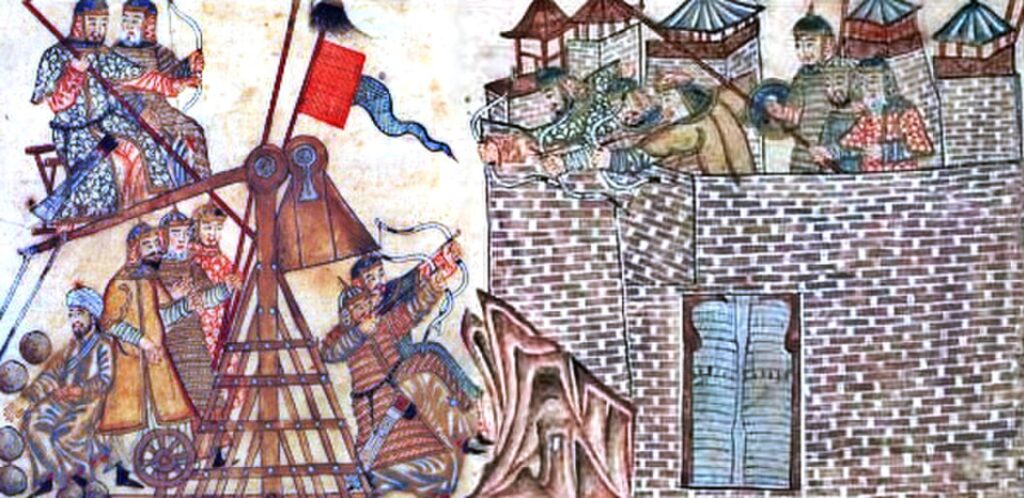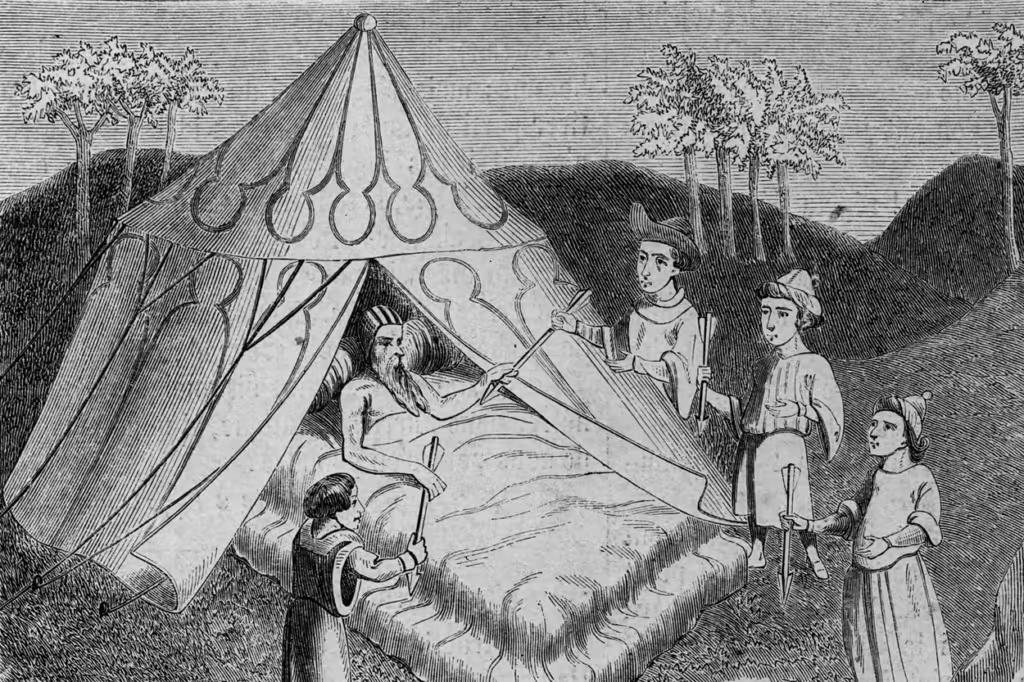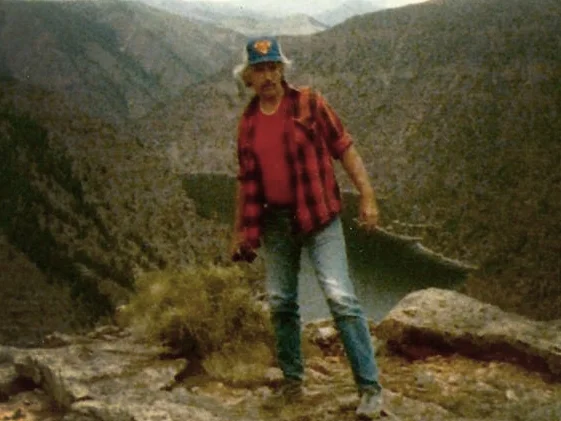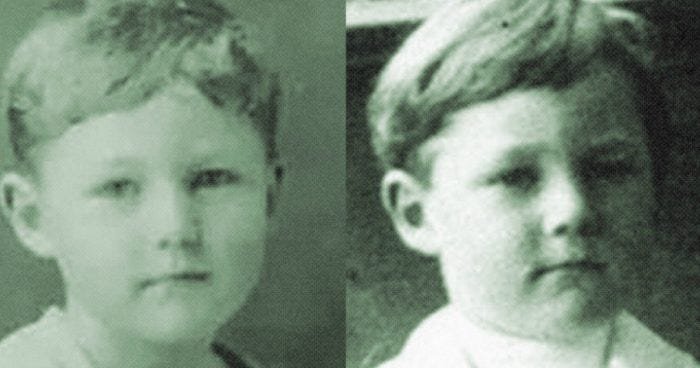Genghis Khan is a name familiar to almost everyone in every language. Whether you think of him as a conqueror or hero, his military campaigns reshaped the medieval world.
At its height, his territory stretched from the Pacific Ocean to the heart of Europe, making it one of the largest empires the world has ever seen.


Despite his worldwide fame and the extensive history written about him, the location of Genghis Khan’s grave remains one of history’s great mysteries.
In this article we will explore the life of Genghis Khan, his military campaigns, and the mystery behind Genghis Khan’s secret burial.
Who Was Genghis Khan?
Genghis Khan was born around 1162 near the Onon River in present-day Mongolia. Originally named Temüjin, he was raised on the harsh, unforgiving steppes of Mongolia. His father, Yesügei, was a chieftain of the Kiyad, a sub-clan of the Borjigin tribe.
The Borjigin, like many other Mongol tribes, were nomadic peoples. They moved with the seasons in search of the best grazing lands for their livestock, which included horses, cattle, goats, and sheep.
When Genghis Khan was still a child, his father was poisoned while on a trip and died.
His death left the family in a vulnerable position, and they were soon abandoned by many of the Yesügei who did not want to support a widow and her young children.
His mother and siblings were forced to live in extreme poverty, surviving primarily on fishing and foraging. He didn’t know it at the time, but these skills of survival, resilience, and leadership would come in handy later in his life.
Through a combination of cunning diplomacy, strategic marriages, and military prowess, young Genghis Khan slowly rose to power. As his power grew, the first thing on his to-do list was to get back at those who betrayed his family.
What followed was a series of retaliatory campaigns against betrayers of his family and the consolidation of the Mongolian plateau’s many tribes.
By 1206, he had not only gotten revenge for his father’s death but was given the title Genghis Khan, meaning “Universal Ruler” of the Mongolian people.
Genghis Khan’s Military Campaigns
Genghis Khan was renowned not only for the sheer size of his army but also for his strategic brilliance and his ability to outsmart his enemies. Under his leadership, the Mongol armies would redefine warfare and established an empire that would influence modern history.
Once he consolidated the Mongolian tribes into the ultimate army, Genghis Khan embarked on a campaign to expand the Mongolian empire, starting by laying siege to the Western Xia dynasty beginning in 1209.
The sheer size of the Mongol army was something to behold. The army was so massive that they often siphoned off valuable resources wherever they went, including deforesting large areas to build trebuchets, battering rams, and siege towers.

The Xia emperor eventually surrendered, and in 1210, agreed to submit to the Mongols as a vassal state. Following on the heels of the successful Xia campaign, Genghis Khan turned his sights to the wealthy Jin dynasty, capturing Beijing in 1215.
Expansion Into Central Asia
The expansion of Genghis Khan’s empire continued throughout the first two decades of the 13th century. As his borders continued westward into Central Asia, he secured valuable trade routes that helped to further strengthen his army and reputation.
One of the empires that Genghis Khan wanted to ally himself with was the Khwarezmian Empire, whose strategic position along the Silk Road offered significant economic and commercial advantages.
When the Mongol’s sent a trade caravan to the Khwarezmian Shah, Ala ad-Din Muhammad II, to show their friendly intentions, their reputation had preceded them. Suspecting the caravan to be a trap, the Shah made the fateful decision to destroy the trade caravan.
Genghis Khan responded with a massive invasion, capturing and destroying major cities like Bukhara, Samarkand, and the capital Gurganj. Facing his own demise, Shah Muhammad fled to an island in the Caspian Sea.
Invasions Of The Caucasus And Kievan Rus
After conquering most of Asia, Genghis Khan started looking westward towards Europe.
The Caucasus, positioned between the Black and Caspian seas, held vital trade routes, and Genghis Khan saw it as a gateway linking the northern steppes with the wealthier Middle Eastern territories.
Genghis Khan then directed his Mongol forces to Kievan Rus, a federation of East Slavic and Finnic peoples centered around present-day Kiev.
The three year campaign resulted in the sack of Kiev and paved the way for the rise of empires such as the Grand Duchy of Moscow and reshaped the political boundaries of Eastern Europe.
The Death Of Genghis Khan
Sometime in August 1227, Genghis Khan died at the age of 65 during a campaign in China against the Western Xia dynasty. No one really knows exactly how Genghis Khan died.
Some sources suggest he died from injuries sustained when he fell off his horse, while others claim he succumbed to wounds received in battle against the Western Xia.

There are also stories that he died of a fever or other natural causes. The mystery behind the cause of death really isn’t a mystery. It was intentional. Mongol traditions at the time dictated that the specifics of the death of a great khan were not to be made public.
At the time of his death, Genghis Khan had established one of the largest empires the world had ever seen, stretching from the Sea of Japan to the Caspian Sea.
His military campaigns reshaped the geopolitical landscape of Eurasia and left a legacy that would influence countless generations.
Under his rule, the Mongol Empire not only conquered vast territories but also introduced innovative administrative practices and significantly boosted trade along the Silk Road.
Theories On Genghis Khan’s Final Resting Place
Another tenet of Mongolian burial traditions ensured that the final resting place of Genghis Khan was also to be kept secret from the outside world to protect the site from desecration and to preserve the sanctity of the leader’s legacy.
After he died, It is believed that Genghis Khan’s body was returned to Mongolia, where he was buried in an unmarked grave.
According to legend, the burial party killed anyone they encountered on their way to the burial site to keep the location secret.
In order to ensure that no living person knew the location of Genghis Khan’s hidden tomb, the soldiers who buried him were said to have been killed by a second group of soldiers, who were then also killed.
This has led some to speculate that the tomb must be extremely isolated, or possibly even under water, as some stories suggest the burial party diverted a river to cover the tomb.
Khentii Mountains Theory
One of the most plausible theories is that Genghis Khan’s final resting place is somewhere in the Khentii Mountains in northeastern Mongolia, an area connected with his early years and rise to power.

The Mongols took deliberate measures to make it look like he was buried somewhere in the mountains. The area was declared sacred and strictly off-limits to all but Genghis Khan’s family and the Darkhad.
The Darkhad were an elite group of warriors who were tasked with guarding the site, enforcing a death penalty on anyone who trespassed in the area. The sole exception was for the burial of Genghis Khan’s relatives.
The Darkhad and their descendants upheld their duty to protect the area for over 700 years until the Mongolian Revolution of 1921 caused a shift in government priorities.
Archaeological And Geophysical Searches
In the 1980s, the Mongolian government began allowing the excavation of historical sites, including those potentially linked to the lost tomb of Genghis Khan.
Modern technology has enabled more detailed searches using satellite imagery, ground-penetrating radar, and other remote sensing technologies.
Several archaeological expeditions have focused on the Burkhan Khaldun mountain in the Khentii range, which is protected as part of the Khan Khentii Strictly Protected Area by the Mongolian government.
Despite this modern search for Genghis Khan’s tomb, no confirmed archaeological evidence of the tomb has been found, although numerous artifacts from the Mongol period have been discovered.
The Ikh Khorig
“Ikh Khorig,” or the “Great Taboo,” refers to a sacred area believed to be the burial site of Genghis Khan. The location is so revered and protected in Mongolian culture that entering it was traditionally forbidden.
The Mongolian government keeps this tradition alive by limiting exploration in the region, which has kept the area undisturbed but also limits archaeological investigation.
Some theorists believe that environmental clues and the patterns of Mongol nomadic movements might provide hints about the location.
Others argue that the burial site might be aligned with astronomical or traditional spiritual significance according to ancient Mongolian beliefs.
Final Thoughts
The final resting place of Genghis Khan ranks among the greatest unsolved mysteries in history. Despite extensive searches and numerous studies, none have ever turned up any concrete evidence.
It remains uncertain whether the location of Genghis Khan’s tomb will ever be found. Nonetheless, the legacy of Genghis Khan and the enduring mystery of his tomb continue to capture the imaginations of people around the world.
Sources
https://en.wikipedia.org/wiki/Ikh_Khorig
https://bigthink.com/strange-maps/genghis-khan-burial
https://www.bbc.com/travel/article/20170717-why-genghis-khans-tomb-cant-be-found
https://www.ancient-origins.net/history-famous-people/darkhad-0011527













Leave a comment